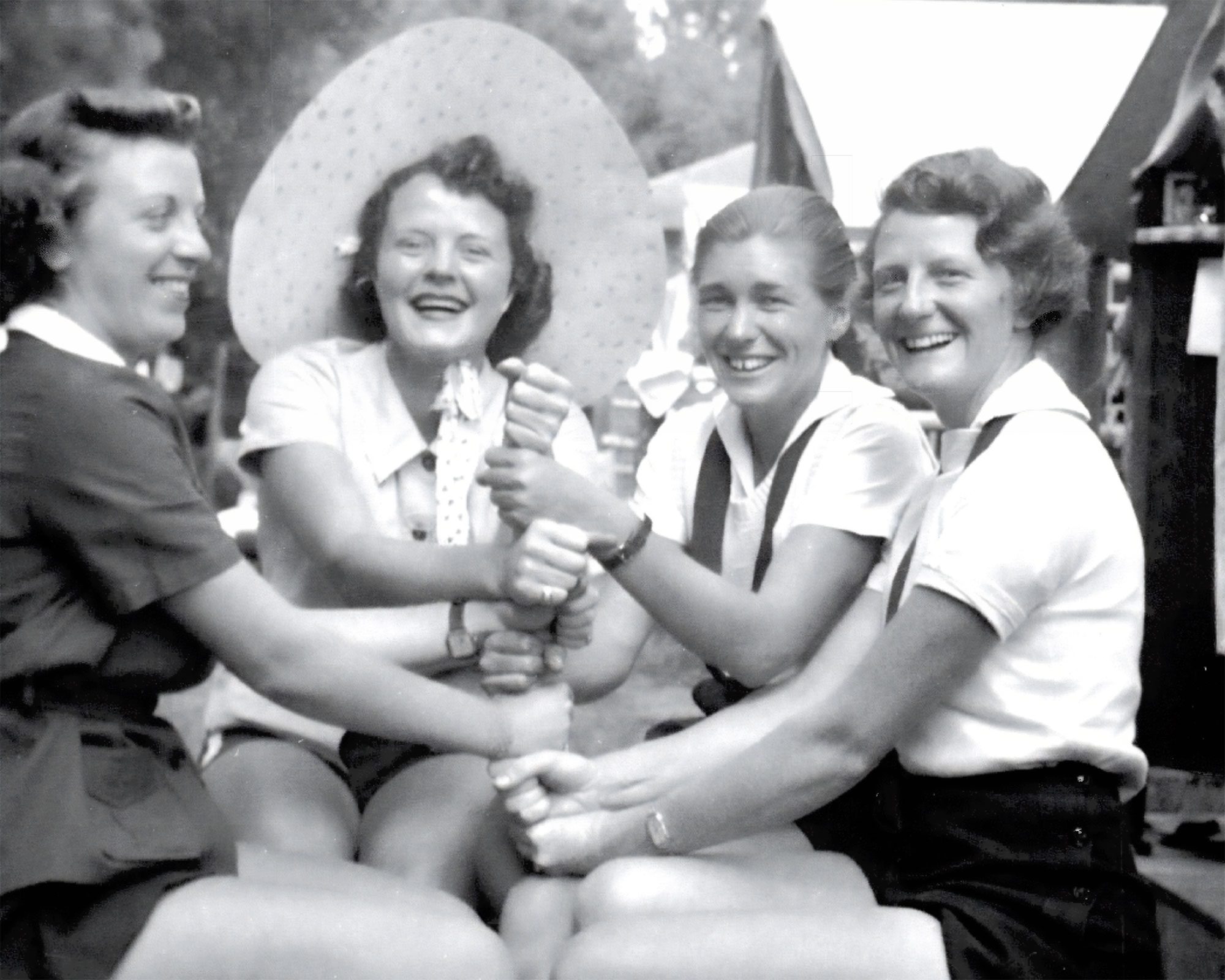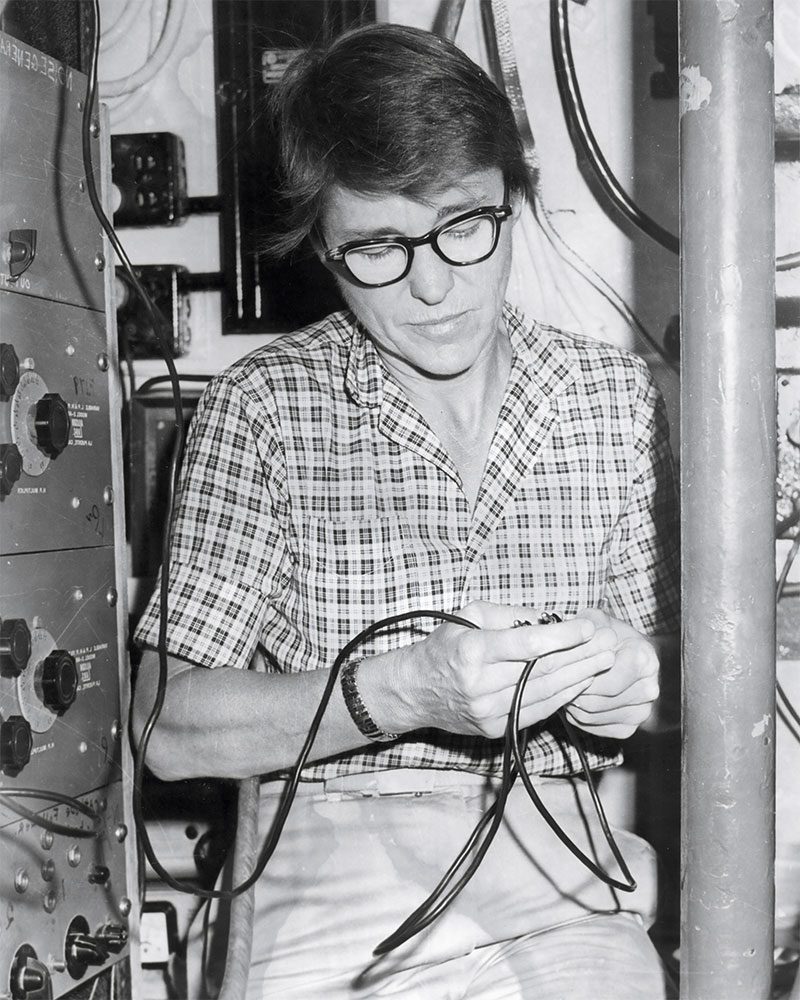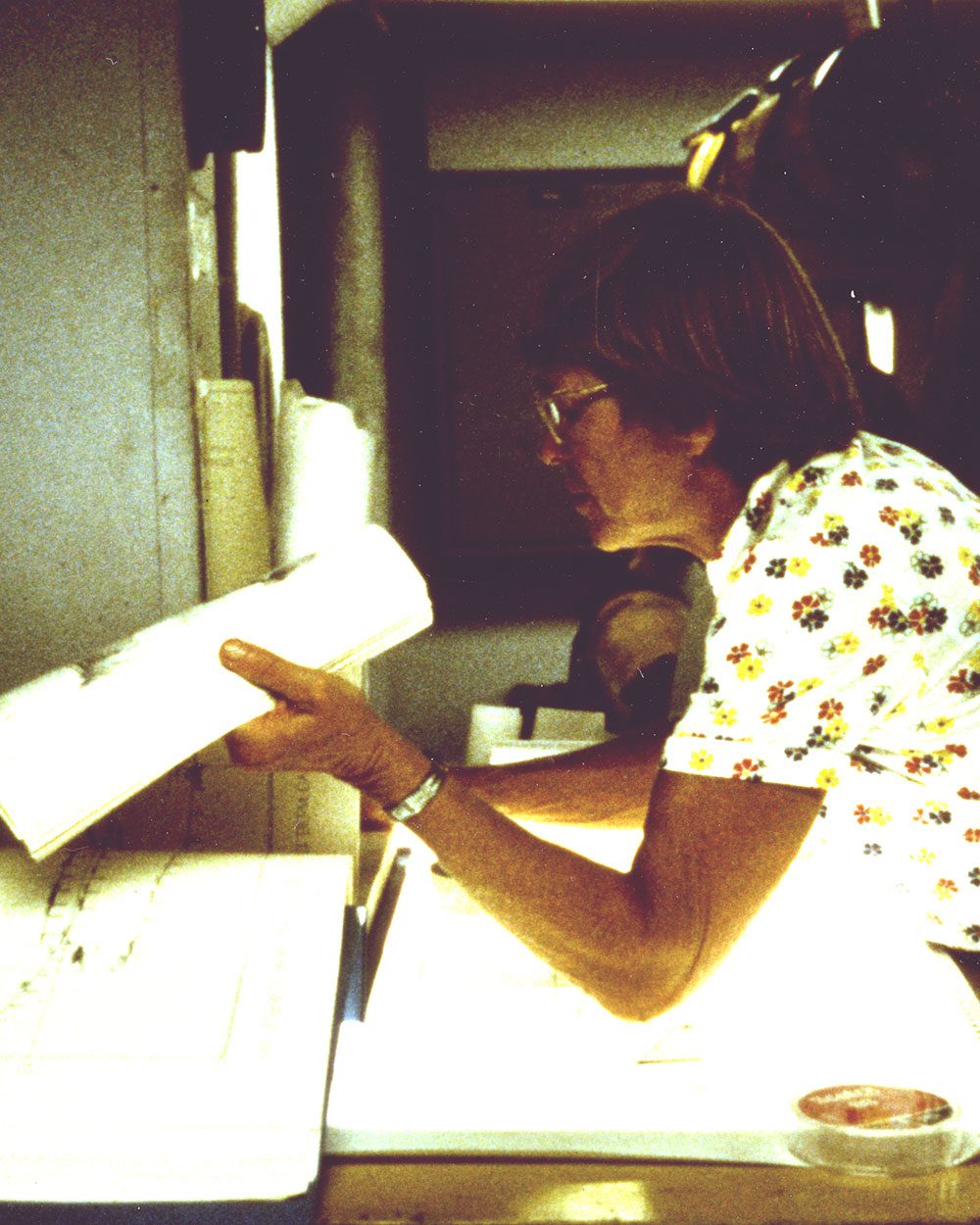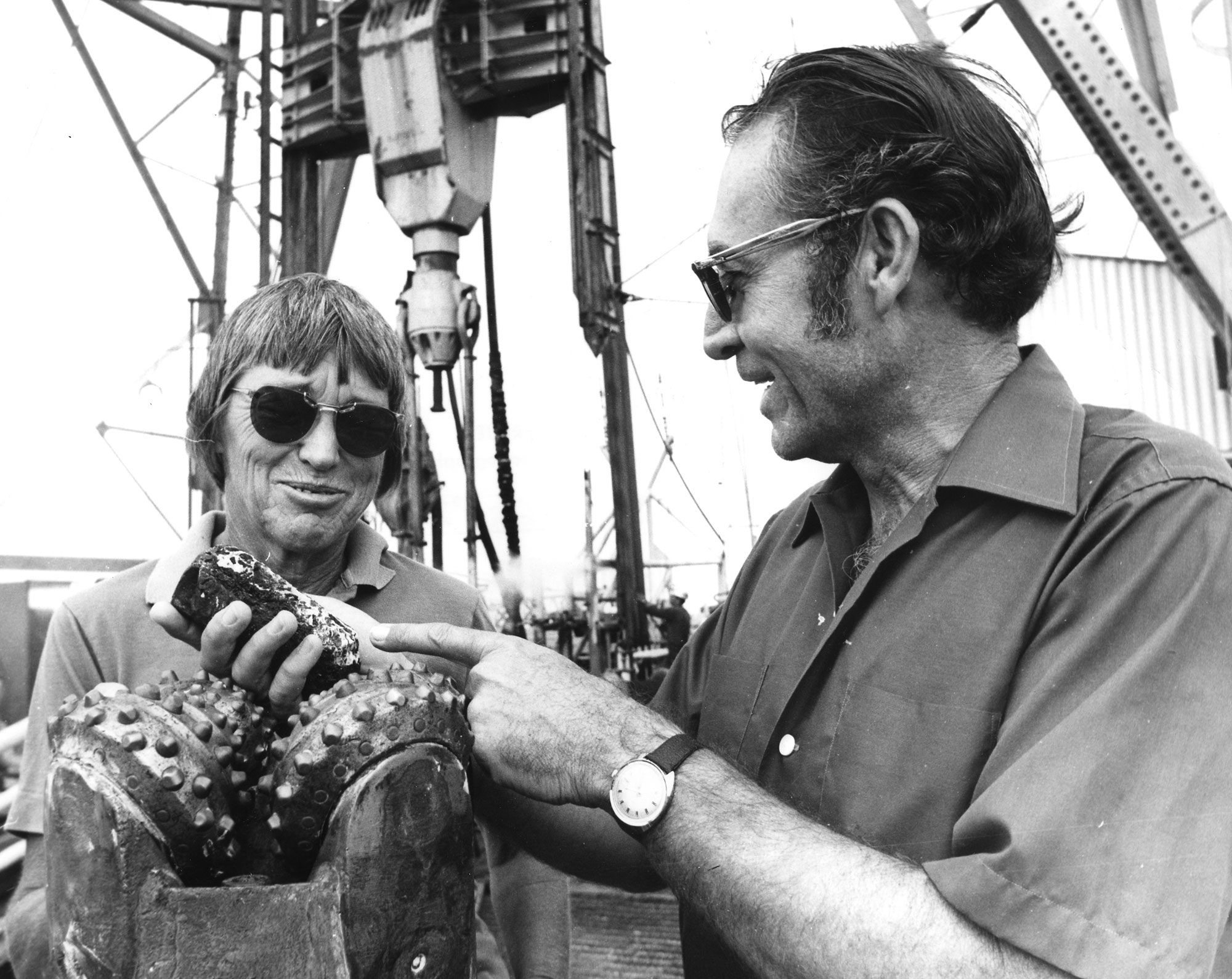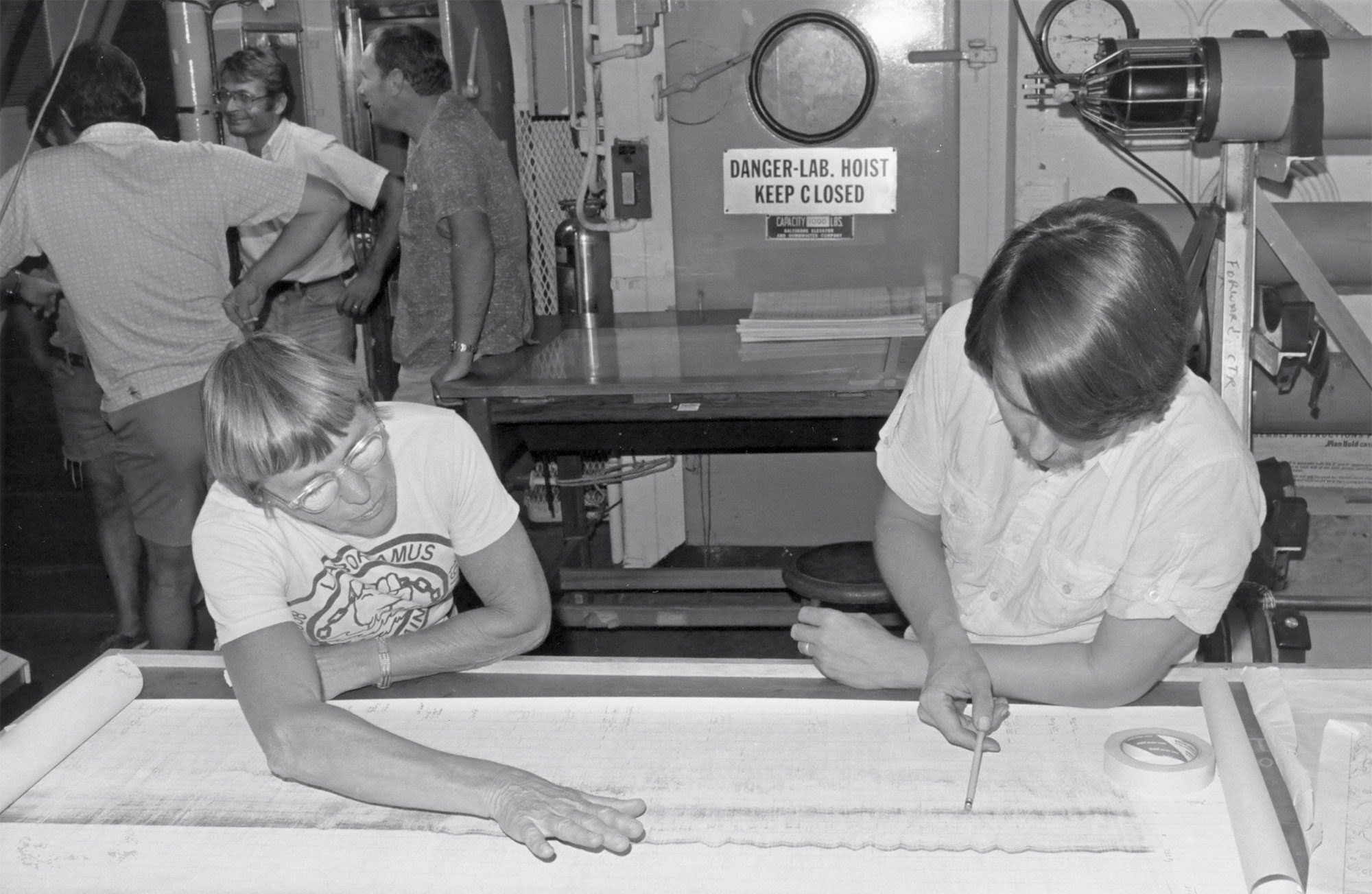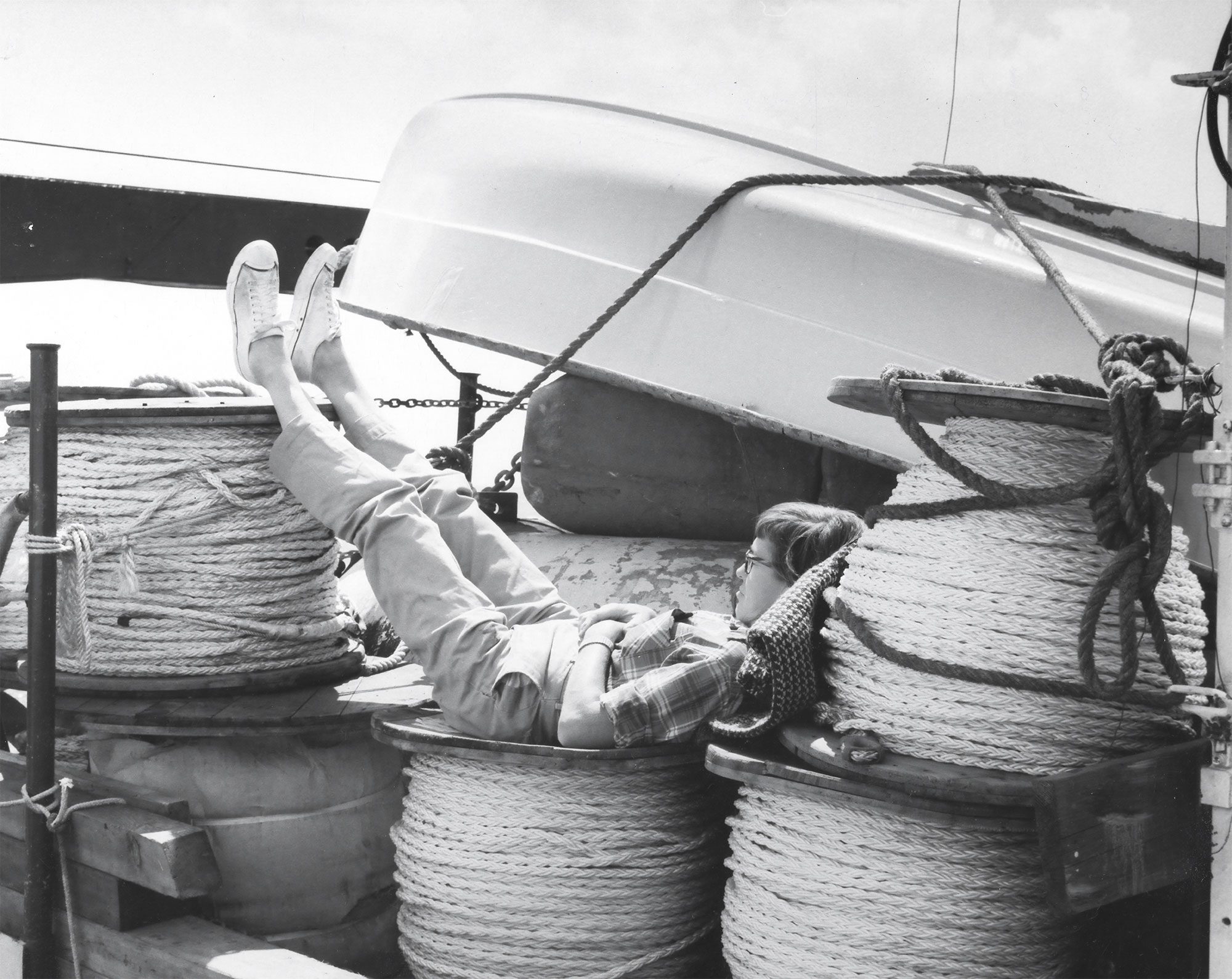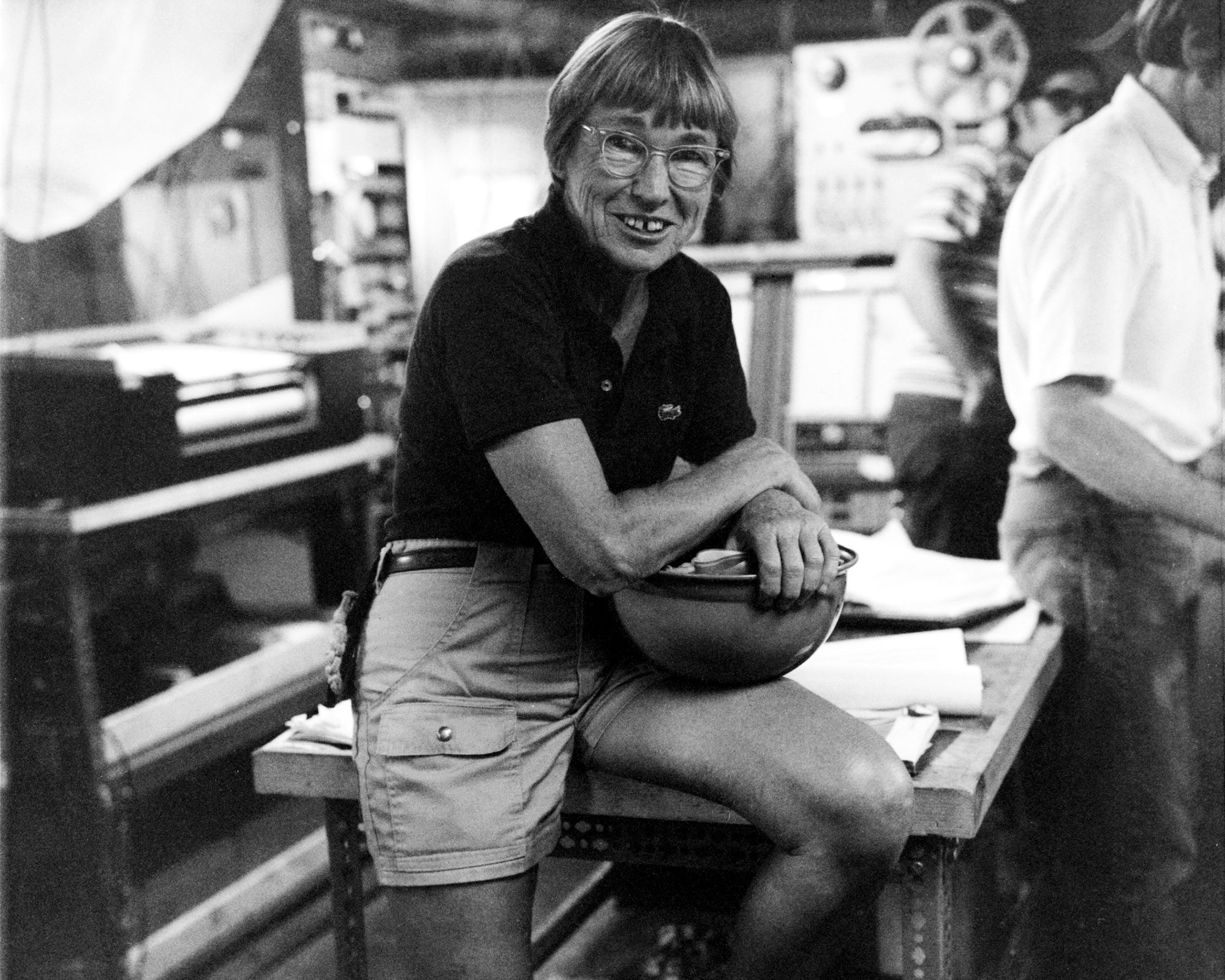Elizabeth “Betty” Thompson Bunce
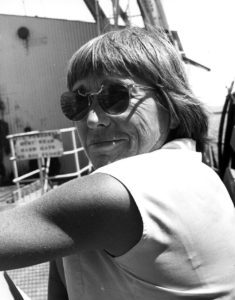
WHOI Geophysicist and first woman to go to sea on a WHOI research ship
The saddest day in my life was when I was very young and I was told I was a girl and there were things that boys could do which girls couldn’t. That meant I couldn’t be a sailor.
The saddest day did not change Elizabeth “Betty” Thompson Bunce’s desire or determination. A native of Mineola, NY, the woman who would be referred to later in life as the “flinty explorer of the ocean’s depths,” had her life and career path altered by a short weekend break in July 1944.
Bunce was a 1937 graduate of Smith College where she majored in physical education. Her interests lay in sports, government, and constitutional law. In 1939, she received her master’s degree in physical education from Smith and found herself teaching physical education at a New Jersey girls’ school where she also became involved in wartime efforts as an air raid warden, a WAVES physical instructor, and a student of armed forces advanced-rating courses.
During a July 4, 1944 holiday to visit a friend who was working at the Woods Hole Oceanographic Institution (WHOI), Bunce made a life-altering decision. The friend worked on the third floor at WHOI, the “third floor” being an employees’ only area that was restricted to those with appropriate security clearance. The “third floor” was heavily involved in the wartime effort – it was where classified underwater explosive research was being conducted. Always curious and intrepid, Bunce truly wanted to see exactly what was happening on the “third floor." She discovered that WHOI job applicants could potentially receive access to the “third floor.” Thus, Bunce filled out a job application and was pleasantly surprised to discover that she was one of a select few that was offered an interview. It appears that Bunce’s wartime coursework did the trick—she had participated in a rigorous crash course in electronics—spending three hours a night for eight weeks to complete it. Bunce was interviewed and offered a job – and got to see the “third floor.”
Teaching was no longer appealing to Bunce but she had to complete the fall semester as promised so she began her new job at WHOI on January 1, 1945. She found herself on the “third floor” working as a technician on air blast explosive experiments in the underwater explosive group. The name of the group was Navy 7 and was under the leadership of J. Bracket Hersey. In the 7, they studied different types of high explosives detonated in the air. The data collected was used for combat and the Manhattan Project—it determined at what altitude the bombs did the most damage and this was done, in part, photographically. While working on the project, Bunce did not know how the data would be used but when she discovered her work played a role in nuclear fission and the Manhattan Project after the bombings in Japan, she felt compelled to learn more.
After the war, Bunce returned to Smith College to earn her master’s degree in physics and mathematics. Degrees in hand, Bunce became an instructor in physics at Smith in 1949, returning to WHOI each summer. Unfortunately (or fortunately), Smith College eliminated her position due to policy changes and, learning of an open position at WHOI under J. Bracket Hersey, Bunce contacted him. She arrived back at WHOI in July 1951 as a Research Associate in Physics (1951-1964) and started testing out acoustic instruments. In 1956, she began a two-year seismic study with the Army Corps of Engineers and in 1959, she was made the Chief Scientist of her BEAR research cruise—the first American woman chief scientist for a major oceanographic expedition. Throughout her WHOI career she would serve on BEAR, as well as ASTERIAS, CHAIN, ATLANTIS II, and many others.
Bunce would serve as the chief scientist on many cruises throughout the 1960s and 1970. In 1964, Bunce was made Associate Scientist in Physics and Geophysics at WHOI, and then, in 1971, she was the first American chosen as a chief scientist—and the first woman to share chief scientist—on a deep sea drilling cruise on GLOMAR CHALLENGER. This Indian Ocean cruise laid the groundwork for the Joint Oceanographic Institutions for Deep Earth Sampling (JOIDES) and helped to prove the theory of plate tectonics and seafloor spreading. Bunce would travel around the world with WHOI and her studies of the Puerto Rican Trench—a fault line between North America and the Caribbean—would find her receiving the honor of having the deepest trench in the Atlantic named for her—The Bunce Fault—just before her death. In 1975, Bunce was made WHOI Senior Scientist and upon her retirement in 1980, Scientist Emeritus.
Betty Bunce had a remarkable career at WHOI. She authored or co-authored over twenty-five papers on marine geophysics and her research primarily focused on crustal structure, marine seismology, reflection and refraction, and underwater acoustics associated with seafloor studies. She was a member of Sigma Xi, the American Geophysical Union, the Seismological Society, the Society of Exploration Geophysics, and a fellow of the Geological Society of America and the American Association of Petroleum Geologists. She remained active in athletics throughout her life by participating and coaching and in 1995, WHOI honored her at its Second Women Pioneers in Oceanography.
Elizabeth Thompson Bunce was a woman of “firsts.” She was the first woman to dive on ALVIN (1965), the first western woman to lecture on marine geophysics at the International Union of Geology and Geophysics, the first woman to serve as a WHOI interim department chair in Geology and Geophysics, the first woman scientist to go to sea routinely, and the first woman chief scientist to go to sea routinely. She was a “world class straight talker,” and known as a jack-of-all-trades who brought a punching bag aboard ship to keep in shape. An avid rower, squash player, and birder, Bunce designed her own home and was even a contestant in the 1960s on “To Tell the Truth” where she fooled three of the four contestants—they could not identify her as an oceanographer.
As her good friend, and the wife of a colleague said, “Whatever she does, she attacks wholeheartedly . . . She has been extremely loyal to WHOI . . .” She is considered one of WHOI’s eminent scientists and was truly a pioneer who inspired, and continues to inspire, women in the sciences.
Jascin N. L Finger July 2022

